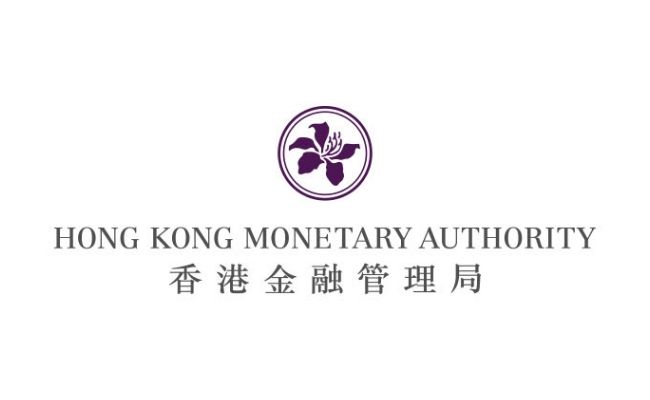
FinTech Story: Hits and Misses From 2013 to 2016 and the Way Forward
By Amit for LTP
We have watched 35+ FinTech segments through the ups and downs every single day in the last 3.5 years at LTP. We developed a lot of listening tools and an army of analysts to catch everything in FinTech like a radar. Somebody told us that we have one of the biggest team of FinTech market analysts and that could very well be true. In 2016, we developed MEDICI from the data that we collect, and that contains 6000+ FinTech startup profiles and research across segments. It’s my pleasure to share what we learned about FinTech shift by analyzing some of the data and also talking to hundreds of entrepreneurs and FIs in-person in the last couple of years.
In the year 2013, in the post “Biggest Mobile Payments Success story, and It Was Not Written in the US,” we talked about Nordic countries as a great example of payments innovation – especially proximity payments (wallets) – that were still in its infancy in most parts of the world from a consumer adoption perspective. The article said, “In 1999, visionary technologist Mikael Signarsson came up with the idea of letting people perform top-ups from wherever they are – internet or otherwise. With a team of five developers, an intense product development process began. In November that year, the first transaction in Sweden was performed for Brightpoint. And in 2001, the company Seamless was formed. In 2011, Seamless announced that its transaction switch does over 2.4 billion transactions per year at over 525,000 points of sales worldwide.”
It was the time when FinTech was not a buzzword and industry was mainly talking about payments innovation with regard to solving problems. Today, be it payments, lending or FinTech as a whole, various regions and countries are emerging on the scene – be it China, Singapore or India. Of course, Japan, Australia and Nordic countries continue to be ahead but less talked about. I guess FinTech innovation in emerging countries is such a transformative change and a problem solver at a scale that those stories just look much brighter. Then there are areas where China (mobile payments, lending, wealth, InsurTech) and India (biometric auth and payments innovation) are going way past everyone else.
Today, Asia is the new playground for FinTech and China is the playbook. While I will briefly discuss China, I want to say that it’s not just about China. FinTech Innovation in Southeast Asia is on the rise as seen below:
Let’s discuss China briefly (a lot has been already said about it on LTP). A few points to see the size of the dent that FinTech has put in the FS market bus:
- Alipay, China’s top mobile wallet app, hit record highs in 2016 for the amount its 450M users spent online or in stores. The app’s biggest group of spenders, the people of Shanghai, paid out an average US $20,400 last year, said the Alibaba-owned company. Those Shanghai shoppers spent 1.5 times more than in 2015.
- China’s shoppers lead the world in paying for things with their phones, with 195 million people using a mobile walletby the end of 2016, according to the analysts at eMarketer. As a percentage of the population, it’s twice the rate of adoption in the US.
- Out of 27 FinTech unicorns, China’s eight FinTech unicorns have raised $9.4 billion + in funding and have a combined valuation of more than $96.4 billion.
India
“In five years’ time, 500 to 700 million Indians will be transacting electronically which is historic. India has an opportunity to become a global reference,” said Mehul Desai, ex-founder of C-Sam (sold to Mastercard in 2014). C-Sam was the first white label digital wallet in the world.
India Stack & JAM (a trio of Jan Dhan Yojna by govt. to open bank accounts especially in rural areas, Aadhar to enable biometric authentication for a billion people in the country with no social ID, mobile penetration and mobile Internet penetration) are transformative platforms for financial services innovation.
FinTech in India is a dramatically exciting story. Traditionally, a cash-based economy with less than 5% of personal expenditure being digital, only 25 million credit cards and less than 1.5 million POS terminals (and various such metrics), one would argue why we are even discussing FinTech innovation in India. But India has been reimagining financial services by the way of a fast and determined financial rewiring process. It all started with the Nandan Nilekani-led UIDAI creating Aadhar – that now has 1 billion people biometrically authenticated – and therefore, creating opportunities for digital onboarding and eKYC as done by Digibank and IDBI bank amongst others. Shown below is another such big initiative called “India Stack” which is acting as a base for innovation. Open API technology for developers to build solutions on:
India is building its financial services foundation with the direct involvement of the central government, regulators and various industry bodies and organizations. The financial services industry is just getting started on a five-year journey of transformation. ePlumbing and rebuilding of scalable financial services infrastructure are happening now at a rapid pace. Startups should begin capitalizing on these tailwinds.
Bitcoin
Bitcoin was quite a hot topic in 2013 and people wanted to know about it and learn about it. So we wrote Decoding Virtual Currencies and Bitcoin for Beginners. We talked about growing awareness, acceptance and 10 Governments, Financial bodies that have given Bitcoin a green signal, and even Vinod Khosla tweeted this article. It inspired us to write more and we wrote about how Ripple is trying to cut remittance service costs and increases speed in 2013. Such was the initial excitement and inquisitiveness.
Today, bitcoin world has changed a lot. Such is the pace of innovation in this industry.
Will bitcoin ever move from gold-like characteristics to fiat currency of sorts?
Olaf Carlson-Wee, the first employee at Coinbase, pioneers of Bitcoin wallet said that “bitcoin will never be a substitute for the dollar.” That is worrying for the bitcoin folks who wanted it to become a global currency as bitcoin was not supposed to be an investment vehicle (gold, stocks) which people amass for profits.
Bitcoin will go up and then go down. We have seen this movie before. It reached the $1000 mark in 2014 and it has reached the sampe point again. There are people who tried modeling this phenomenon and failed. Then there are bigger issues than just volatility. Last week, a bitcoin-mining company known as GHash.IO was in a position to blockade transactions or spend bitcoins more than once. According to some sources that power came from the fact it controlled the majority of the computing power in the global network that processes and verifies bitcoin transactions. What? Satoshi had foreseen how such an attack could work, but he had designed the system under the assumption that it would be impractical for anybody to amass so much computing power. This is where rubber meets the road. ?
The coders who maintain bitcoin now face the challenge of altering the system’s protocol to prevent such a thing from happening. Even Gavin Andresen, Chief Scientist for the Bitcoin Foundation and previously core maintainer of the bitcoin code, has long warned that mining has become too centralized. In a blog post reacting to concerns about GHash.IO, he cautioned, “Bitcoin is still a work in progress, and you should only risk time or money on it that you can afford to lose.”
Blockchain
Discussions had not moved to blockchain even as late as by 2014. In 2015, we wrote the blockchain use cases research report that has become a landmark for blockchain content on Google search.
Today, the blockchain world is questioning if somebody needs to define protocols and common standards to enable large-scale adoption? The big tech companies showed great interest and have been relentlessly making progress, especially Microsoft and IBM. Bill Barhydt’s Abra, Vinny Lingham’s Civic and Ashish Gadnis’s BanQu are great ideas and have had initial success as well. Axoni doing post-trade settlement has key banks as investors (the ones who left R3). uTrade and Clearmatics are good in that space as well.
I know the IT services industry is putting in a lot of time and effort in putting together capabilities (PPTs and some actual depth) and on the other hand, hundreds of startups are working on products around use cases. It’s almost like when you have a hammer, everything looks like a nail. When are we going to see a unicorn in this space? Nobody knows. When are we going to go beyond pilots? When are we going to have the “camera got into the mobile moment?”
Cybersecurity
In 2014, we wrote a post about security and authentication and published a couple of reports. We said that the topic of Cybersecurity deserves much more attention and we doubled down on it in the next two years. Cyberattacks are costing global businesses around $500 billion per year, according to RT. In the last five years, the financial industry has been the top target for cybercriminals with IT and telecom, defense, and the oil & gas sectors following behind. Security analytics, threat intelligence, mobile security and cloud security are expected to see the most significant growth. Being at the forefront of both cybercrimes and funds poured into cybersecurity, four banking industry giants—JPMorgan Chase & Co. ($500 million), Bank of America ($400 million), Citigroup ($300 million) and Wells Fargo ($250 million)—will collectively spend $1.5 billion on cybersecurity annually. Turning to particular markets, it is worth paying attention to Israel, which is the largest exporter of cyber-products after the US. Israeli companies exported $6 billion (USD) in cyber-related products and services in 2014.
We have seen that no single factor (technology, models/math and now behavioral science) between is apt at solving security problems. We are seeing some interesting combinations of behavioral science, math and technology. With the proliferation of mobile phones, an additional level of security is being introduced by monitoring the way users interact with their devices in real time.
FinTech startups and banks should be worried about this
Many people believe that FinTech still doesn’t threaten traditional banking. While that might or might not be true, I am looking at leadership from a different quarter. Those players are powerful, resourceful and have some of the best technology talents in the world.
The big tech companies – it appears that Google, Amazon and BATs from China may well be amongst the frontrunners in FinTech innovations. There will be a few Ubers as well coming from totally independent roots. Industry pundits believe that FinTech startups have several odds to overcome. The big boys of tech are developing propositions in financial services with lots of resources and talent and the more time FinTech startups take to scale, the better chances of success for this biggies. They are serious and some of them are now becoming successful.
IBM’s acquisition of Promontory is a sign of things to come. Watson will be trained by 600 RegTech experts of Promontory creating RegTech AI products; imagine the possibilities. Similarly, Microsoft is doubling down on blockchain and offering blockchain-as-a-service. Uber is launching the Uber card in Mexico and car loan financing. Apple and Samsung are still trying hard to make their wallets useful.
Ping An, Tencent and Alibaba joined forces in 2013 to launch Zhong An, China’s first truly digital insurer. Through this cross-industry partnership, Alibaba and Tencent are trying to leverage their user bases with the help of Ping An to grow into traditional industries. ZhongAn’s online insurance offering has more than 350 million customers.
Another example of big tech boys hitting home runs: Ant Financial’s Yu’e Bao is now third-largest money market fund in the world with ~$125bn AUM, all in a span of three years.
Digital ID
In 2015, the narrative in FinTech and tech, in general, started adding one more important term: Personal Data. While we might think that with the breaches of personal data and hacking/phishing stories, we will all learn fast; if previously we used to automatically hit the “Accept” button with long lines of data points we give access to, now is the time to take an extra minute to actually read what you are giving away. But that’s not happening. And no it’s just not the millennial that cares less about their data privacy – people are sharing data for convenience across all ages. Everyone want things to happen in few clicks. This leads me to a topic which is important as well as related to Digital ID. This a cutting edge field with companies such as Civic in the US, Alibaba group companies such as Sesame Credit and their social scoring concept in China and India stack’s consent layer.
Digital identity systems are one of the most pressing infrastructure needs in today’s world. Integration followed by interpretation of data has to be the key drivers for digital identity in this era of big data and artificial intelligence. The next digital ID would be a global ID driving trust between organizations and people across borders. As a user, you could decide what you want to share and what you don’t want to share. And you could see what your Internet footprint is. A digital ID platform could take inputs from various sources such as utilities, mobile sensors, airlines, phone companies, shopping habits and from financial services and turn it into an intelligent ID that can be used for access (auth) as well as to customize preferences.
Voice Commerce
Windows, icons and menus, and then touchscreens, were welcomed as more intuitive ways to deal with computers than entering complex keyboard commands. Being able to talk to computers abolishes the need for the abstraction of a “user interface” at all. But “voice” takes it to another level. When we published the article Voice Is the New OS, little did we know things will evolve so fast. Brian Romelle had said, “In the next 10 years more than 50% of computer interactions will be via voice. The computer, the device and the legacy interface will disappear; all that will persist is the volition, intention, interaction and results.”
- No screens and keyboard era
- We move from basic voice commands in voice commerce today to emotionally intelligent tomorrow.
- Next level: Read the tone and character of user voices and respond accordingly. Other inputs such as gesture to improve contextual understanding and the appropriateness of a response.
AI and RPA
In March 2016, a huge milestone was reached in the field of artificial intelligence: AlphaGo, a program developed by Google’s DeepMind unit, defeated legendary Go player Lee Se-dol in the first of five historic matches being held in Seoul, South Korea. What was most interesting is what Lee said afterward, “I was very surprised,” said Lee after the match. “I didn’t expect to lose. [But] I didn’t think AlphaGo would play the game in such a perfect manner.”
In the quest of replicating human behavior through cognitive software, AI has become a potential game changer for back-end heavy industries such as banking, which is bogged down by the low productivity, largely attributed to the mundane, repetitive back-end processes. Software robots, commonly known as the “virtual workforce” are automating the back-end processes, thus channeling the resources and creative minds towards the front-end; because that is where the magic happens.
Robotic Process Automation, or RPA, is just the tip of the iceberg that is Cognitive AI. Cost and FTE reduction is just a glimpse of what it has in store for us. We might be looking at a human-assisted robot offering strategy consulting services to CXOs, an RPA-driven agile banking front-end with its best personnel employed in customer-facing roles, thus enhancing customer experience. AI and RPA have the potential to effectively change the landscape of financial services.
And it’s not just FS, companies are doubling down in this area irrespective of the industry. To get a sense of how important this area is to even companies like NVIDIA, consider the following: in its most recent conference call, AI was mentioned 45 times (smiles), and two of its 4 multibillion-dollar growth drivers are AI based.
Having said all the above, I would also add that nobody knows what will happen. All of us are good at predicting the future (till it happens). Bill Gates said, “Forecasts are almost always wrong.” Yet we see so many wise men writing FinTech forecasts. Crystal ball gazing is wrong, but actionable data from a wide section of participants tracked over a period of time (continuously and objectively) knows a bit about FinTech evolution; at least we can learn from the mistakes but also that data-driven insight becomes a leading indicator of sorts. Data knows things and you can derive time-saving insight – millions of clicks across articles, in-depth discussions and reports and other things on LTP. And our global network in the form of MEDICI knows a bit and we will keep trying our best to share and help.
PS: The above is not very MECE (mutually exclusive, collectively exhaustive). This reflects the FinTech industry of today – so many segments, so many players and an insane amount of topics to discuss. The above was a collection of some of the things that were important to share and on top of our minds.
First appeared at LTP





